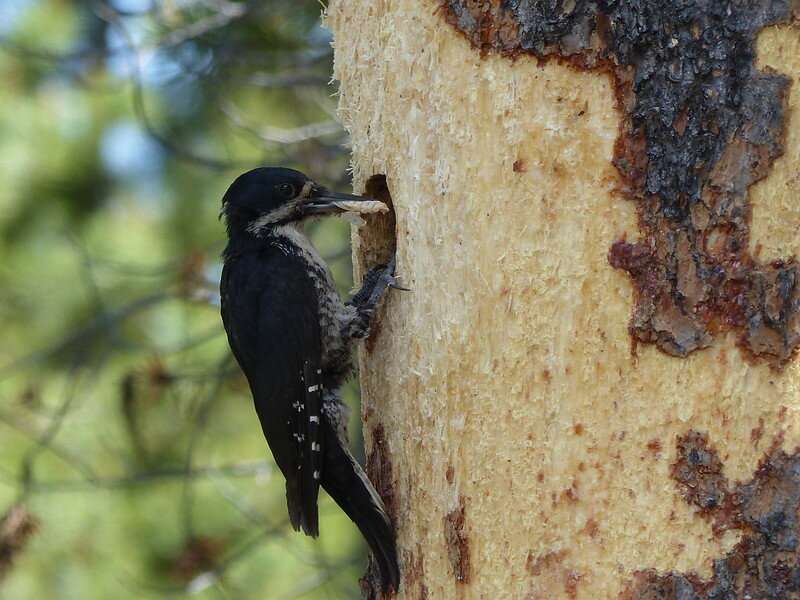This article has been reviewed according to Science X's editorial process and policies. Editors have highlighted the following attributes while ensuring the content's credibility:
fact-checked
trusted source
proofread
Woodpecker that likes burned forest can breed in unburned woods too, research shows

A species of woodpecker once thought to limit itself to recently burned areas can breed successfully in the unburned parts of fire-prone landscapes too, according to a study by Oregon State University scientists that holds key implications for improved conservation and forest management efforts.
The research led by doctoral student Mark Kerstens and Jim Rivers, a faculty member in the OSU College of Forestry, sheds new light on the black-backed woodpecker, which lives throughout northern North America.
Because woodpecker populations are sensitive to large-scale forest disturbances, they serve as an indicator for guiding management decisions, the researchers note. Woodpeckers exert strong influence on the surrounding ecological community by creating nesting sites that benefit a range of vertebrates and other organisms.
The black-backed woodpecker has become a species of conservation concern because of habitat loss resulting from postfire management of burned areas as wildfires have grown in size and intensity in recent decades, the scientists say.
The bird's range covers much of Canada and also parts of Alaska and upper portions of the contiguous United States, including the Pacific Northwest, and the woodpecker's black and gray coloring makes for ideal camouflage in an environment of charred trees.
Rivers and Kerstens studied black-backed woodpeckers in a 165,000-hectare area in southern Oregon's Klamath Basin in stands characterized as lodgepole pine, ponderosa pine, mixed conifer and mixed pine.
"It had long been thought that black-backed woodpeckers only nested in conifer forests that had recently experienced high-severity fire," said Rivers, an assistant professor of wildlife ecology. "Although burned areas provide important habitat for this species, recent studies noted them occupying large areas of unburned forest in the western part of their range during breeding season, prompting the question of whether the green areas can support viable nesting populations."
For three breeding seasons, 2018, 2019 and 2021, the scientists collected data to evaluate whether important population metrics differed between woodpeckers nesting in green and burned forests.
"We kept track of 91 nests, 34 in green forest and 57 in burned forest," Kerstens said. "We found that neither daily nest survival rate nor reproductive output—the number of fledglings per successful nest—differed between green and burned forest nests; we also found that nestling body condition was a bit better in green forest."
In addition, the scientists monitored survival of recently fledged birds with VHF radio telemetry tags and determined that the survival rate of birds in green forest was similar to those in burned forest, with most mortalities happening within four weeks of fledging.
"Although densities of nesting pairs in green forest were lower than those in burned forest, our research shows that certain types of green forest, particularly mature lodgepole pine, can support viable populations of the black-backed woodpecker in the western portion of the bird's range," Rivers said. "These findings have conservation implications because green areas are more stable in the resources they provide, they occupy much of the forested landscape in the region, and they are often adjacent to areas subjected to high-severity fire."
That means, the researchers say, that practices that help build "pyrodiversity"—landscape-level time and space variability in fire effects—will likely provide the greatest conservation benefit for the black-backed woodpecker. Also beneficial will be management that provides for habitat elements the species needs, such as medium- to large-diameter trees, and connectivity between green and burned forest.
The study was published in Ornithological Applications.
More information: Mark E Kerstens et al, Is green the new black? Black-backed Woodpecker vital rates do not differ between unburned and burned forests within a pyrodiverse landscape, Ornithological Applications (2023). DOI: 10.1093/ornithapp/duad010
Provided by Oregon State University




















